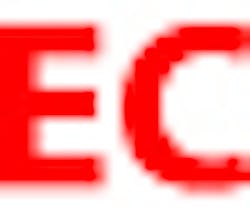There was a time two decades ago when a metropolitan area more famous for nightlife than wildlife also boasted a 2,000-ac. wetlands habitat. Today, a committee of scientists, bureaucrats, and private citizens is racing against time and the elements to save what little is left of the once-sprawling wetlands.
Vanishing Desert Wetlands
The Mojave Desert is North America’s driest desert, averaging about 4 in. of rain a year. But when the rains come, the results can be devastating for the fragile wetlands. Kim Zikmund, project manager for the Las Vegas Wash Coordination Committee (LVWCC), explains that the Las Vegas Wash is the only natural drainage channel for the entire 1,600-mi.2 Las Vegas Valley. A July 1999 storm, which left much of Las Vegas and adjacent suburb Henderson afloat, sent an estimated 4.5 billion gal. of water through the wash in less than a day. The following morning, the wash had changed significantly, Zikmund says. “There were spots where the wash had widened by 300 feet.”
Such noticable erosion is nothing new for the Las Vegas Wash, which sees an average of 150 million gal. of water per day during the summer months-predominantly from urban flows that include runoff and treated wastewater flows. These flows are not inherently bad for the wash; treated wastewater flows actually created the wetlands in the first place. However, the ever-increasing volume has saturated the sandy soil and made the channel vulnerable to powerful flash floods.
Watershed Protection Becomes a Public Issue
Erosion, while the most visible problem, is only one of the issues with which the new committee is grappling. Water quality in the largely man-made tributary is also a key concern. In fact, protecting the quality of water entering Lake Mead, the Las Vegas Valley’s primary water supply, was the impetus for the LVWCC’s creation. The group’s formation was a direct result of a recommendation from the Water Quality Citizens Advisory Committee, a grassroots panel set up by regional water agency Southern Nevada Water Authority (SNWA) to identify and prioritize issues affecting potable water quality. Managing and restoring the Las Vegas Wash emerged as priority number one.
“This citizens committee spent a year looking at everything that could potentially affect water quality, and they really locked in on the wash,” Zikmund notes. “Most of their recommendations were specifically linked to that aspect of watershed protection.”
The SNWA’s board of directors, comprising elected officials from local governments, tasked the water authority with coordinating the LVWCC’s activities. Complicating matters is the fact that no single entity has jurisdiction over the Las Vegas Wash, while stakeholder groups number in the dozens. In surprisingly short order, the LVWCC came to order. In all, representatives from nearly 30 government, citizen, environmental, and business organizations answer the roll call.
Coordination Committee Develops Strategy, Scope
Devising a strategy to elicit from this diverse group a Comprehensive Adaptive Management Plan for the wash was even more formidable an undertaking than the creation of the committee. For one thing, the Las Vegas Wash is impactedby a tremendous number of variables. The group adopted a strategy of “divide and conquer,” wherein they broke into nine study teams, each charged with divining a solution to its specific issue. Coordination, aside from being a part of the committee’s name, was essential to minimize redundancy and conflicting solutions.
The study teams are Jurisdictional/Regulatory Relationships, Alternate Discharge to the Las Vegas Wash, Shallow Groundwater, Erosion/Stormwater, Wetlands Park Plan, Funding, Environmental Resources, Public Outreach, and Land Use. Each team is developing its chapter for the final document, which will be digested and synthesized by the project team.
Public Outreach Takes Precedence
The coordination committee’s public participation origin has helped the panel maintain focus on the bottom line. The community, after all, views the protection of the Las Vegas Wash not as an end in itself but rather as a means of protecting the valley’s precious water supply. Residents are also far more interested in action than in studies and discussions.
The Public Outreach study team has assumed responsibility for interfacing with the public and keeping it apprised of progress, which has been quick in coming. Its communication tactics, which include providing articles for all of its members’ publications in addition to publishing its own Current newsletter, have generated a great deal of public interest. In fact, awareness of the Las Vegas Wash grew so quickly that an annual wash and wetlands cleanup event more than doubled its volunteer base from 600 citizens in 1998 to nearly 1,400 citizens in 1999.
The LVWCC has also delved into the world of high-tech with its own website. Through the Internet, interested parties are able to access a wealth of information about the wetlands habitat, factors affecting the wash, and the committee’s activities. The Web site even has its own photo gallery, where cyber-visitors can get a close-up look at the remote area.
A Blueprint for Success
By year’s end, the committee hopes to have completed the draft Comprehensive Adaptive Management Plan, which will serve as a template for addressing current issues and anticipating future ones. This timetable is remarkable, considering that the panel met for the first time in late 1998.
“They’ve made amazing progress,” Zikmund remarks, “given the complexity of the issues and the number of entities involved. In large part, I think the committee’s aggressive approach stems from the desire of the public to have this situation addressed. It’s a balancing act, weighing the need for instant results against the benefits of long-term research, but I think this group understands that we need to do something relatively quickly in order to protect the remaining wetlands and protect our region’s source water.”


